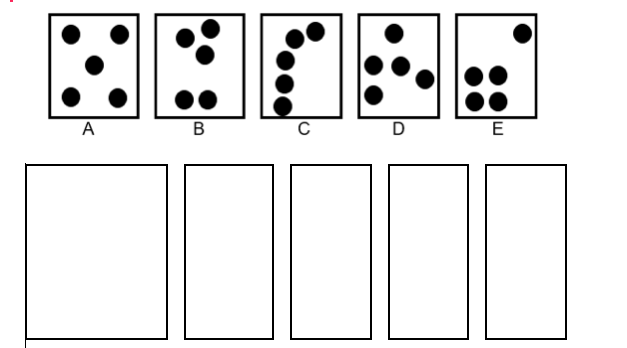Number sense essentially refers to a learner’s ability to use numbers in relation to one another, i.e. they can recognise number symbols and relate it to the actual number of objects. There is a common misconception that, if learners can count to a certain number, they are smart and understand numbers. However, the question is whether they know the value of each number?
Take this scenario:ah
Nataly, a Grade 3 learner, still uses her fingers to count and has difficulty with some of the easier Maths problems. However, there are several really difficult problems that she can easily do. How is this possible?
Let’s do a simple test. Look at the arrangement of the dots in each of the blocks:

BCD EAll of the blocks represent the number 5, but it is structured in different ways. A learner with no number sense will start to count the dots in each block, but a learner with number sense will automatically divide the dots into groups or create a structure in order to get to the value of the number.
A: This is a familiar arrangement, it is represented on a dice or on playing cards and learners will recognise this arrangement easily.
B: This is a sub-group arrangement. The dots are arranged into sub units and will force the brain to add the three dots to the two dots.
C: This is a linear arrangement. It will most likely prompt counting, however, many people will mentally separate the dots and organise them into groups.
D: This is a random arrangement with no obvious grouping structures. The brain will try to look for a pattern or a way to divide them in order to get meaningful patterns.
E: This is also a sub-group arrangement, like in B, but the difference is that the brain will add the one dot to the other four dots.
Number sense boils down to the value of a number. Learners like Nataly find different ways and detours to do Maths without knowing the basics – they create alternative methods to get to the answers.
Teaching number sense is very basic and forms the foundation of Mathematics. Here are a few ideas on how to stimulate number sense:
- Use dot cards and play games, e.g. memory games, with learners.
- Teach number combinations up to 10. Cut 10 circles from two different colours. Pack the circles in different combinations and see how fast the learner can recognise the number combinations. Repeat the exercise using a variety of number combinations, e.g. two red circles and four yellow circles = 6
- Play games such as Halli Galli, which focuses on number combinations and establishes a foundation for number sense.
It is very important to ensure that number sense is engraved in a learner’s brain before moving on to more difficult Mathematical problems. Additionally, d an enriched learning environment that enhances the development of number sense can be craeted by means of a variety of wall charts and number games.
References
Way, J. (2005). Number sense series: Developing Early Number Sense, Online: https://nrich.maths.org/2477, Access 23 August 2017.
- Supporting families facing bullying with a viable alternative - November 11, 2025
- Education beyond the traditional classroom: The benefits of home and online schooling for South African learners - October 9, 2025
- Making Sense of Infinite Content: Why Curation and Curriculum Matter in Online Learning - September 16, 2025





